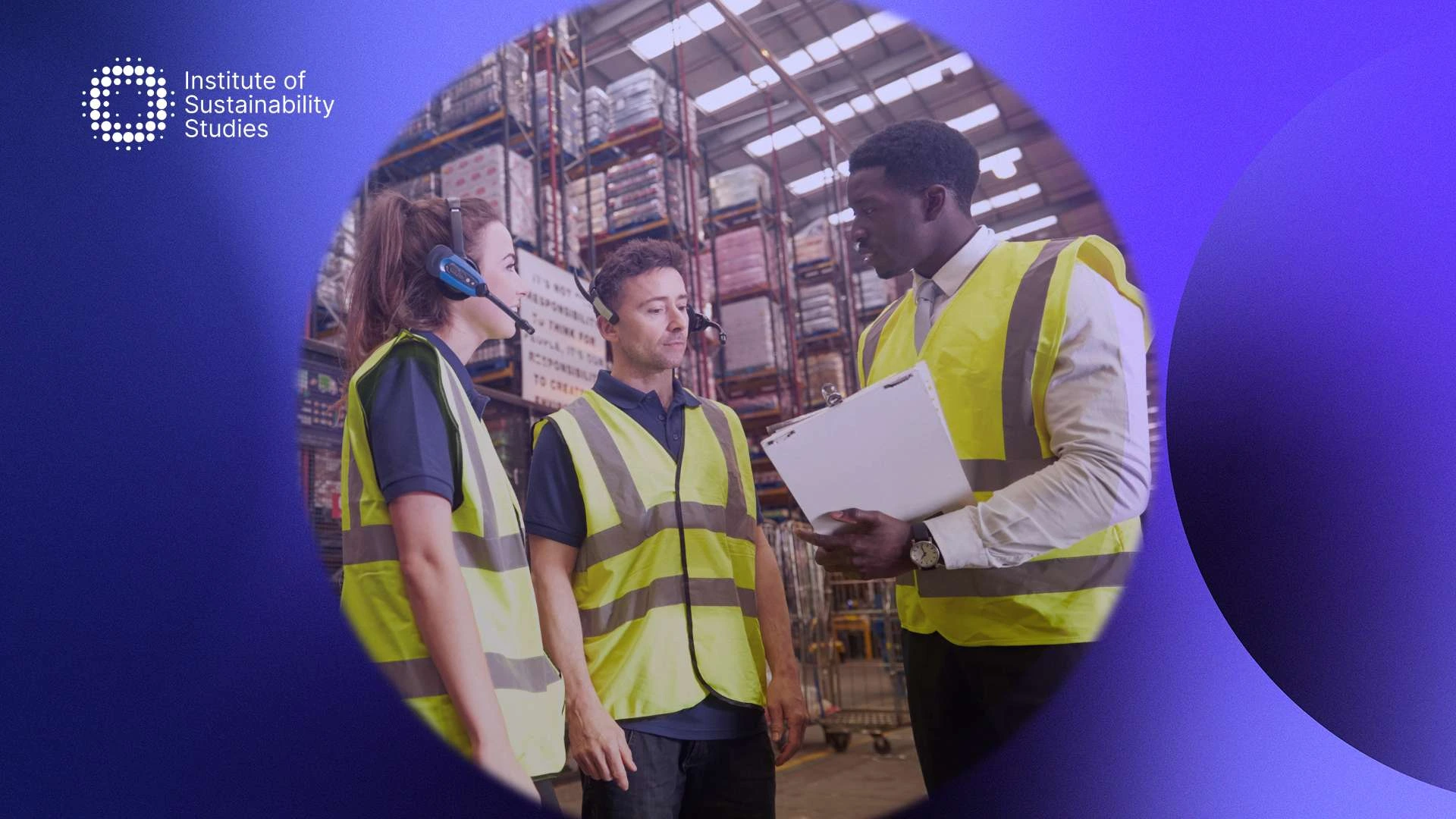The role of green packaging in marketing has become increasingly vital as consumer awareness and demand for environmentally friendly products continue to rise. Nielsen reports that 73% of global consumers would definitely or probably change their consumption habits to reduce their impact on the environment.
This consumer shift has spurred brands to innovate in their packaging strategies, not only to reduce carbon footprints but also to enhance their market appeal and brand loyalty. Continue reading as we dive further into the role of sustainable packaging in marketing strategies and why it should be an important pillar in any business sustainability plan.
The advantages of green packaging for brands
Consumer demand for sustainability is reshaping the packaging industry by pushing companies to innovate and adopt practices that are environmentally friendly, economically feasible, and socially responsible.
This trend is not only transforming how products are packaged but also how they are perceived in the marketplace, making sustainability a crucial element of modern brand strategy. Unsurprisingly, green packaging offers a variety of advantages for brands. Below are some of the key benefits of taking the leap and integrating eco-friendly packaging solutions.
Enhanced brand image and loyalty
Brands that adopt green packaging often see a boost in their public image, as they are perceived as responsible and forward-thinking. This positive image can attract and retain customers who are increasingly making purchasing decisions based on environmental impact. Such practices not only rdraw in environmentally conscious consumers but also build long-term loyalty by aligning brand values with those of their customers.
Market differentiation
In competitive markets, sustainable packaging can be a key differentiator. By offering eco-friendly packaging solutions, brands can stand out from competitors who may still be using traditional, less sustainable options. This differentiation can be a significant advantage in markets where consumers have a strong preference for sustainability.
Regulatory compliance
With governments around the world tightening regulations on waste reduction and recycling, adopting green packaging can help brands ensure compliance with these laws and avoid potential fines or sanctions. Proactively adapting to such regulations can also position a brand as a leader in sustainability, ahead of future legal requirements.
Operational cost reduction
Eco-friendly packaging materials often involve using fewer materials or more cost-effective, recycled materials. Over time, these choices can lead to substantial cost savings in terms of raw material procurement, waste management, and transportation. Lighter and more efficiently designed packaging can reduce shipping costs, while durable and reusable options can offer long-term savings over disposable alternatives.
Access to new markets and customer segments
Sustainability is becoming a more significant factor in consumer choices. Due to this, sustainable packaging opens up opportunities to tap into new markets and customer segments. For instance, millennials and Gen Z consumers, in particular, show a strong preference for brands with a clear commitment to environmental sustainability.
Reduced environmental impact
Sustainable packaging materials directly contribute to reducing a brand’s environmental footprint by minimising waste, reducing resource consumption, and lowering greenhouse gas emissions. This not only benefits the planet but also aligns with the increasing expectations of shareholders and investors who are focused on ESG criteria. For example, Baileys recently launched aluminium bottles for its 70cl product line and this represents a commitment to waste and carbon reduction.
Brands leading the way
Many brands are at the forefront of integrating sustainable packaging into their marketing strategies. This is having a ripple effect, setting benchmarks for the industry and demonstrating how environmental initiatives can be effectively aligned with consumer branding and engagement. Below are some notable examples.
Unilever
Considered a leader in sustainable packaging, Unilever is committed to ensuring that all of its packaging is fully reusable, recyclable, or compostable by 2025. Unilever has also innovated with refill stations for products and launched concentrated refills to reduce plastic usage. These initiatives are heavily marketed to align with their brand values of sustainability and responsibility.
Lush Cosmetics
Known for its ethical sourcing and environmental stance, Lush uses biodegradable packaging and has introduced “naked” or package-free products. Lush promotes its sustainable packaging as part of its brand ethos, appealing to eco-conscious consumers with stores that prominently display bulk products and encourage minimal packaging use.
IKEA
The furniture giant has committed to phasing out all single-use plastic products from its stores and restaurants by 2020 and aims to use only renewable or recycled materials in its products by 2030. IKEA’s marketing often highlights these initiatives, positioning the brand as both stylish and sustainably conscious.
Patagonia
A pioneer in environmental activism, Patagonia uses recycled materials for its clothing and gear. It prominently features the environmental savings of its packaging choices in product descriptions and marketing campaigns, reinforcing the brand’s commitment to not causing unnecessary harm.
Loop by TerraCycle
Though not a single brand, Loop is an innovative platform partnering with brands like P&G, Nestlé, and Unilever to offer reusable packaging solutions. Consumers can purchase products in durable, reusable containers that they return to Loop for cleaning and reuse, which the involved brands highlight in their marketing efforts to showcase their dedication to sustainability.
Challenges in adopting sustainable packaging
Adopting sustainable packaging presents a variety of challenges for businesses, from logistical and technical issues to economic and regulatory hurdles. Here are some key challenges companies often face when transitioning to sustainable packaging:
Cost implications
Initially, sustainable packaging solutions can be more costly than traditional materials due to the higher prices of biodegradable or recycled materials and the economies of scale yet to be achieved. The investment in redesigning packaging, researching new materials, and potentially adjusting manufacturing processes can lead to significant upfront costs.
Supply chain complexities
Securing a steady and reliable supply of sustainable materials can be challenging, especially for companies operating on a global scale. Supply chain complexities in this respect could surround the variability in the availability and quality of recycled materials, and bio-based plastics can complicate production schedules and output consistency.
Consumer expectations
While many consumers demand sustainable packaging, they may not always accept the trade-offs, such as changes in packaging appearance, feel, or performance. Educating consumers about the benefits and necessary compromises of sustainable packaging can be an ongoing challenge.
Regulatory and compliance issues
Navigating the complex landscape of regulations that govern packaging materials, especially in different markets, can be daunting. Compliance with various international, national, and local standards and laws regarding recycling, compostability, and materials use requires constant vigilance and adaptability.
Design and aesthetic constraints
Designing packaging that is both functional and aesthetically pleasing using sustainable materials can limit creativity. The need to integrate branding effectively while adhering to sustainable practices sometimes requires innovative approaches that may not always be straightforward.
Overcoming these challenges requires commitment, innovation, and often, collaboration among businesses, consumers, governments, and other stakeholders. Despite these hurdles, the move towards sustainable packaging is critical for environmental sustainability and offers significant long-term benefits for brands that successfully navigate these initial obstacles.
The future role of green packaging in marketing
Consumer awareness and the demand for environmentally responsible products is growing. Unsurprisingly, this has resulted in a rising demand for sustainable packaging. Businesses are feeling compelled to respond to this demand by innovating their packaging strategies.
The use of eco-friendly materials, reduction of packaging waste, and initiatives for recyclability are becoming crucial elements of corporate sustainability efforts. The future of packaging is clearly green, and this will play a major role in shaping sustainable business practices and consumer habits globally.










